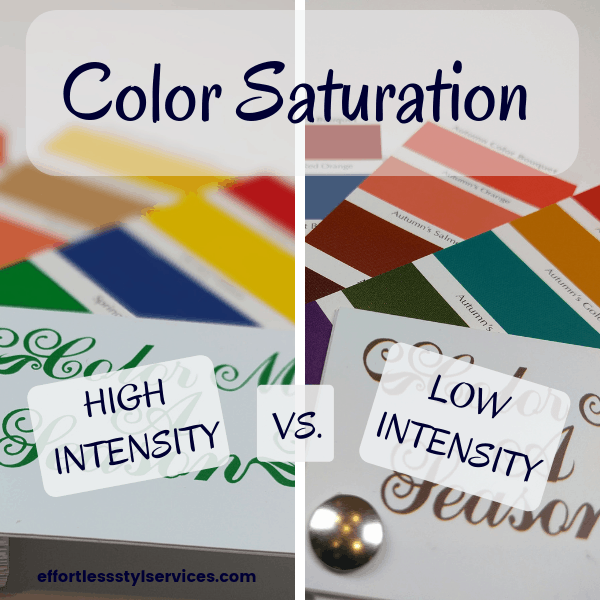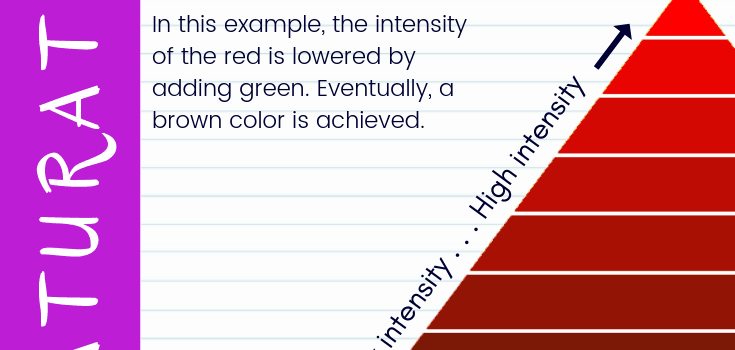
.

Intensity is an aspect of color that we will discuss frequently when talking about the colors in your wardrobe and cosmetics.
Intensity, or saturation, is the pureness of a color.
These terms may be used interchangeably.
Changing the Intensity
The saturation or intensity of a color decreases when adding its complement. If you add equal parts of complements together, you get a neutral brown or gray color. It’s amazing the variations you can find in just the color we call brown. Each pure color in the color wheel can be desaturated to create a brown or grayed color. Take red, then add its complement, green. Eventually, you’ll get a warm brown.
If you add more green than you have red, this would be a cool brown. . . But here I go getting into the temperature of color- that leads us into the next post. In the next post, color temperature (it’s not as simple as you were taught— red, orange and yellow are warm while green, blue and purple are cool) will be addressed and something called the enriched, or double primary color wheel. Hang in there with me. We’re almost to the good stuff.
Follow my Color Pinterest Board for more information and inspiration.
Applying the Principles of Saturation
Ultimately, different intensities of color look the best on different complexions. Springs appear best in high intensity colors. Winters carry normal saturations well. Autumns look best in lower saturated or earthy colors. AND, finally, Summers in normal intensity colors but with high value. Want to learn more about color and how to use it successfully in your wardrobe? Read one of the other posts below.
- When You Dress you begin with H-U-E
- 50 Shades of Everything, Not Just Grey
- The Cool and the Warm of it
- How to Use Color to Master Your Style
- I Do Not Wear Black Anymore
- She Was Green with . . .
- Am I Getting Warmer
Lastly, don’t forget to sign up for my FREE Color Course or read one of the other posts below.



